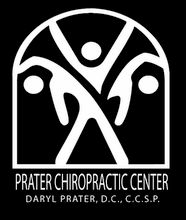 Welcome Back Teresa Xaundria!
Welcome Back Teresa Xaundria!Despite an unfulfilled promise of 50 degree temperatures and extreme conditions at the prior week’s killer tempo combo, the masses still came back for a scenic run around Gull Lake. As a matter of fact, we have such a great thing going Rachel Wittkowski drove all the way down from Grand Rapids to join the fun. Teresa Xaundria, now on the post surgery road to recovery, also made her first Beyond appearance to a round of applause!
Last Sunday Joel Pennington completed the Austin Marathon as his 3rd 26.2 and set a brand new PR of 3:43:37! This amazing feat also earned him an exclusive interview with Runners World Editor in Chief David Willey. Well, not really, but he did sit next to Mr. Willey on the plane ride down! Joel will be signing autographs at next week’s run at KVCC.
After pulling off a very well organized inaugural Steve Athey Memorial Race last year, it became quite apparent that Bob Smola doesn’t hold a clue as to how to produce anything less than a first class act. Three weeks ago Bob battled a blizzard to set out aid stations and pace signs in Plainwell. This Saturday at Gull Lake, he set out bright orange cones indicating aid stations, AND spray painted the road indicating mile markers. This years Steve Athey Memorial is scheduled for July 7, and no doubt Bob will pull off something just a little out of the ordinary. The final results are not in yet, but Bob is also in the running for Day Sponsor of the Year! Tim Sochor is first runner up.
After being offered a course map, Pat Johnson politely declined with the statement,” It might get me lost!” Patti Montilla took one…we hope she didn’t get lost. Tony Golubski played the part of a hitchhiker and joined the meteor shower someplace mid course. It IS official!!! Bob Poznanski has been inducted into the Team Varmin Hall of Fame after sticking close to the lead group out at Gull Lake Saturday. As a matter of fact, he even led for much of the way. Sorry Bob, your Team Garmin days are OVER!
The BIG news of the week is that after many months of searching, Jen Shaffer finally found Gull Lake! We are not quite sure how she managed to avoid this for so long, but Jen also, for the very first time since moving to Kalamazoo, got stuck at a rail road crossing for 10 minutes on the way over. Now she is officially “Kalamazoo” through and through. Fifteen miler down, Jon Williard’s plans for the rest of the day featured “Cookies and a Movie.” Amanda Portis is taking up a new profession, using her navigational talents to become a course designer.


















